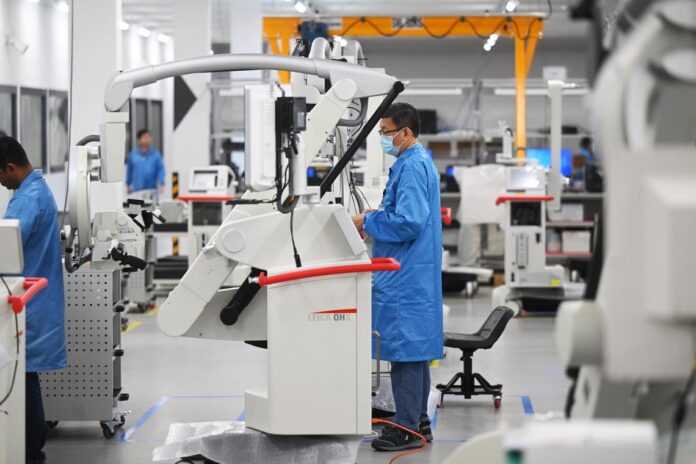SINGAPORE – Singapore’s manufacturers ended 2024 on a positive note and can look forward to continued expansion despite a mixed outlook for the region, say experts.
The purchasing managers’ index (PMI), a barometer of the sector, rose to 51.1 points in December, up from 51 in November. Readings above 50 indicate growth; those below point to contraction.
But electronics sounded a muted note, with the sector’s PMI falling from 51.6 in November to 51.4 points, noted the Singapore Institute of Purchasing and Materials Management, which released the data on Jan 2.
December marked the 16th consecutive month of growth for the overall manufacturing PMI and the 14th for electronics.
Elsewhere, manufacturing data from India, the Philippines, Taiwan, China, Thailand and Indonesia point to further growth ahead, but factory output in Malaysia, South Korea and Vietnam slid below the 50-point mark in December, suggesting upcoming contraction in those nations.
Experts told The Straits Times that Singapore’s electronics and the broader manufacturing sector remained in expansion, with sufficient momentum to extend growth into the first quarter of 2025.
“The strong PMI for December is not surprising, given the uptick in GDP (gross domestic product) growth in the last quarter,” said Associate Professor Goh Puay Guan, from NUS Business School’s Department of Analytics and Operations.
“The trend would probably continue in the short term, while the medium term will depend on how the larger macroeconomic environment plays out.”
Maybank Research senior economist Chua Hak Bin added: “Front loading of shipments and production ahead of higher potential US tariffs under Trump is driving the manufacturing expansion.”
DBS Bank economist Chua Han Teng agreed, noting: “Near-term external demand for Singapore’s manufactured products, especially electronics, remains resilient, as indicated by positive readings in several sub-indices, including new export orders, new orders and order backlogs.”
But he warned that there was a need to remain “vigilant of the downside risks beyond the very near term, stemming from the potential intensification of geopolitical tensions and a wider trade war under a second Trump-led US administration”.
“We would need to observe a sustained and deeper correction in domestic electronics manufacturing PMI sentiment, coupled with signs of weakening in the global technology cycle, before turning decisively bearish on the sector’s prospects.”
Mr Chua feels that the December data augurs well for the outlook of domestic factories, at least in early 2025.
Meanwhile, OCBC Bank chief economist Selena Ling noted that the first quarter is a traditionally slower period due to the Chinese New Year holiday.
She added that because of 2024’s higher base, and as front-loading effects fade, “I’m still looking for a moderation in manufacturing and GDP growth in 2025”.
Another major uncertainty arises from the timing and magnitude of Trump’s tariffs when he takes office on Jan 20.
Even if Singapore is not the target of those tariffs, Ms Ling believes that there may be an indirect, spillover impact from China and other key trading partners, either through trade, potential inflation or a growth slowdown.
“In the short term, I won’t be too surprised if manufacturers take a breather to reassess the situation after Trump takes office,” she said.
“The Fed is also slowing its pace of easing, hinting at a pause and fewer cuts in 2025, so the tailwind from lower interest rates may be subsiding.
“That said, if China’s growth can stabilise close to the 5 per cent handle, as policymakers step up stimulus to counter the external tariff drags, then that can be a mitigating factor too,” she noted.
Maybank’s Dr Chua was more sanguine. He felt that Singapore’s free-trade agreement and bilateral trade deficit with the US suggest that Singapore will be a less likely Trump target, although “trade flows may face disruption from a broader global trade war”.
“The PMI readings in the coming months could provide an early gauge on whether Singapore’s manufacturing and export recovery will be short-circuited by Trump’s tariff tantrums.”
Join ST’s Telegram channel and get the latest breaking news delivered to you.



